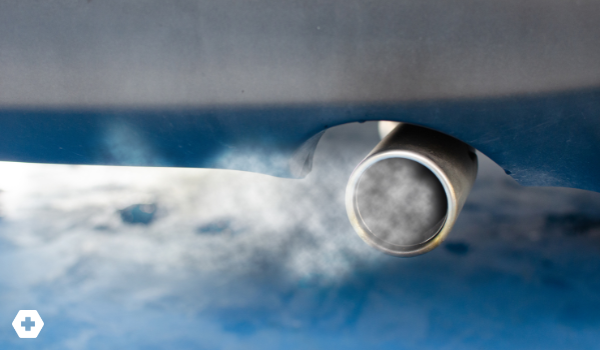
Carbon Monoxide Poisoning: A Silent Threat in Urgent Care
Winter is here, and patients with URI symptoms are pouring into urgent care. Patient after patient with similar complaints can feel like you’re on rinse and repeat all day long.
Recently, I had an experience that has stuck with me and now remains in the back of my mind, urging me to dig a little further if the presenting symptoms are vague. Last year was a particularly rough cold and flu season, and the area that I live in has freezing winters, with nightly temperatures regularly falling below zero. One of the clinics that I work in is in a rural area where people intentionally live off the grid. I had a couple who had come in together to be seen, thinking they had the flu. Symptoms were persistent headache, dizziness, and nausea, which had been present for several days and were not dissimilar to many other patients in the waiting room that day.
Initially, I suspected another case of the flu. However, routine questioning about their living conditions and potential exposures revealed an unexpected detail. The patients lived in a renovated pole barn about 20 miles outside of town and were excitedly sharing stories about their ongoing home improvement projects. They relied on a wood-burning stove for heat, and during our conversation, one patient mentioned their latest venture: building a sauna.
They had spent the morning working on the sauna but had to stop as they both started feeling progressively worse. This detail caught my attention. I had recently read an article about carbon monoxide (CO) poisoning, so I decided to dig deeper. I asked how they had been heating the sauna while working on it. Their answer was alarming: they were using a portable radiant propane heater—a device considered safe in larger, well-ventilated spaces.
Suddenly, the pieces of the puzzle fell into place. Saunas are small, tightly sealed spaces designed to retain heat. With the cold weather outside, they had kept the door closed while working. This combination created the perfect environment for carbon monoxide buildup.
Acting on my suspicions, I immediately arranged for both patients to be transferred to the emergency department. Blood tests confirmed my concerns: elevated carboxyhemoglobin (COHb) levels, confirming carbon monoxide poisoning. Thankfully, both patients recovered fully, but the outcome could have been tragically different. This experience serves as a reminder of the insidious nature of carbon monoxide poisoning.
As healthcare professionals in urgent care settings, we frequently encounter patients with vague, non-specific symptoms that can be challenging to diagnose. One potentially life-threatening condition that can easily be overlooked, especially during flu season, is carbon monoxide poisoning.
Understanding Carbon Monoxide
Carbon monoxide is a colorless, odorless gas produced by the incomplete combustion of carbon-based fuels. Its danger lies in its ability to bind to hemoglobin with an affinity 200-250 times greater than oxygen, forming COHb. This process reduces the blood’s oxygen-carrying capacity, leading to tissue hypoxia and oxidative stress.
Signs and Symptoms: The Chameleon of Toxicology
CO poisoning is often called “the great mimicker” due to its non-specific symptoms, which can easily be mistaken for flu or other common illnesses. Recognizing these symptoms is crucial for timely diagnosis and treatment.
Mild to Moderate Exposure:
- Headache (most common)
- Dizziness
- Nausea
- Fatigue
- Flu-like symptoms
Severe Exposure:
- Confusion
- Shortness of breath
- Chest pain
- Loss of consciousness
- Seizures
It’s important to note that symptom severity doesn’t always correlate with COHb levels, making clinical assessment challenging.
Potential Causes: Beyond Faulty Heaters
While faulty heating systems are a well-known source of CO, urgent care clinicians should be aware of other potential causes, especially in vulnerable populations:
- Poorly ventilated cooking appliances (like propane stoves in enclosed spaces)
- Vehicle exhaust in enclosed spaces
- Smoke inhalation from fires
- Industrial exposure
- Deliberate inhalation (suicide attempts)
Seasonal variations, with increased incidence during colder months, should also be considered.
Tests and Diagnosis: When Suspicion is Your Best Tool
In many urgent care settings, the ability to measure COHb levels directly may not be available. However, this limitation shouldn’t prevent us from recognizing potential CO poisoning. Here’s how to approach diagnosis:
- Patient History: Ask about potential CO exposure sources and if others in the same environment are experiencing similar symptoms.
- Physical Examination: Look for neurological deficits. We were taught to look for “cherry-red skin”; however, this isn’t always present.
- Referral for Definitive Testing: If CO poisoning is suspected, arrange immediate transfer to an emergency department equipped for measuring COHb and, if indicated, advanced treatment.
Keys to Recognizing CO Poisoning in Urgent Care
- Cluster Awareness: Be alert to multiple patients from the same household or environment presenting with similar symptoms.
- Seasonal Vigilance: Be more suspicious during colder months when alternative heating methods might be used, particularly in vulnerable populations.
- Symptom Patterns: Pay attention to symptoms that improve when the patient leaves a specific environment and worsen upon return.
When to Refer to the Emergency Department
Given the limitations in COHb measurement in many urgent care settings, it’s crucial to know when to refer patients to the emergency department. Consider immediate referral if:
- There’s a strong suspicion of CO exposure based on history and symptoms.
- Patients show neurological symptoms or signs of severe poisoning.
- Pregnant women with suspected exposure (fetal hemoglobin has a higher affinity for CO).
Remember, the absence of definitive testing in urgent care should lower the threshold for referring to the emergency department when CO poisoning is suspected.
This content includes material generated by ChatGPT to aid in the editing process. All material has been human-reviewed and approved by our content team.
Practice-Changing Education
Experience education that goes beyond theory. Explore Hippo Education’s offerings below.



